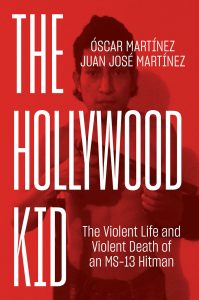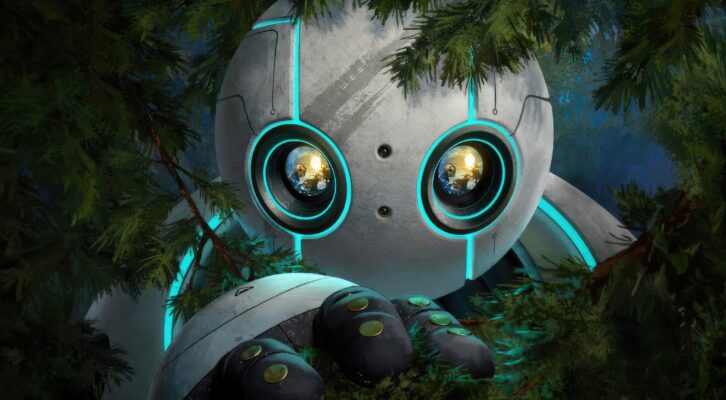Los Angeles in the 1980s was a complicated space. It contained both the whitewashed exuberance of Beverly Hills and the desperation of the poor Latino and African American neighborhoods. A cocktail mix of a swanky Sunday brunch with a spritz of blood from an alleyway machete fight.
The Salvadorans kept coming. Hundreds of them every day, carrying the dust of a civil war on their thin-soled shoes. As of 1981, the military-political conflict had come of age. The brutal repression of the organized masses had turned into full-fledged guerrilla warfare. Various insurgent groups unified to form the FMLN. By 1983, the guerrilla rank and file were men and women with grit and tactical experience in staging ambushes and attacking military garrisons. The war, in short, had been professionalized. The fight against the counterinsurgency was being run by high military officials, with the National Guard focusing solely on urban repression. The killing fields migrated from the streets to the mountains.
The Salvadorans arriving in Los Angeles, the mecca of US gangs, had been hardened by this violence. What Richard found in Los Angeles in the 1980s was not only the gang that would become his family for the next thirty years, but an entirely new world: all-consuming and violent, but also intriguing. The world of the Sureños.
Where he came from, what you did when you saw an enemy was simple. You aimed your weapon and fired. But it was different in the Sureño neighborhoods of LA. Each block and ’hood was dominated by a particular Latino gang, typically named after their barrio: Hawaiian Gardens 13, White Fence 13, Florencia 13, La Puente 13, Varrio Nuevo Estrada, Artensia 13, Pacoimas 13. All Hispanic, all at war. They fought with other gangs like Crazy Riders 13—the locos with the machetes and the hatchets—or the menacing, old-school Playboy 13, elegantly outfitted gangsters that defended Normandie Street wearing sport coats, short-brimmed hats, button-down shirts, ties, and shiny shoes. Pachucos that recognized fellow members by folding in their thumbs, index, and middle fingers and making bunny ears with their ring fingers and pinkies. But all of them, no matter what gang they belonged to, were playing the same game.
The “13” came from a simple substitution. All the nascent gangs were affiliated with the all-powerful Mexican Mafia. “M” is the thirteenth letter of the alphabet. That’s why the Hispanic gangs used the number 13 in their names, signaling that they were part of the same Sur system and working under the shadow of the same Mexican Mafia—that gang of gangs that controlled the prisons and managed the system of punishment for all gang members who failed to conform to the code.
Richard found it all fascinating, and when he talks about those early years he shifts around in his seat and switches between Spanish and English, dredging up his old passions. One day, the gangs were his ultimate enemies. The next day, inside a Californian prison, they were his allies in a yard brawl against the black gangs.
Salvadorans took a few LA neighborhoods by storm—places where no one was thinking of brunch. The majority of those being jumped into the gang structure joined Barrio 18, which dated back to the 1950s, and whose lineage was also tied to the powerful Mexican Mafia. Despite some resistance from Mexican and Chicano gang members, the Salvadorans filled out the ranks of hundreds of different Hispanic gangs in the Sur system. The MS, however, still received most of the recent Central American recruits. And it became a gang built by them, run by them, and in defense of them.
* * *
The rookies quickly learned the basics of the game, but not all its subtleties. They came from a brutal place and didn’t understand temperance. It was like trying to teach a Neanderthal the rules of boxing.
“The Crazy Riders 13, for example,” Richard says, “became really dangerous when the Salvadorans showed up. They knew how to ride in a pick-up with giant machetes, along with files to sharpen them up. They were crazy, because most of them were Indians from San Miguel”—an eastern Salvadoran department.
Juan, a Salvadoran from Ilobasco (one of the areas most affected by the war) who was affiliated with a small gang in Orange County, the Shalimar 13, tells a dramatic story. Fellow gang members told him they were going to kill some enemies from the Alley Boy 13 gang. They gave him a pistol. But when Juan pulled the trigger, he discovered that there were no bullets in the gun. It was just a test—something all aspiring members needed to pass. The other gang members were laughing at him back in the car, ready to peel out before their enemies came to hunt them down.
But Juan, furious at having made himself so vulnerable, grabbed a gun his uncle had given him and shot a couple of them in the face. And then he jammed the barrel into another terrified gangster’s mouth and told him never to pull shit like that with him again. They never did. In the ten years that Juan would lead the gang, they stopped using that initiation test. Juan was deported to El Salvador in 2010, and he told this story back in his native Ilobasco. The enormous tattoos he had all over his body, even on his face, wouldn’t let him live in peace in El Salvador. The police hounded him. The gangs, both MS and Barrio 18, which had been in the country for decades at this point, threatened him. He went back to the United States to live without papers—not in California this time, but a state that was “less violent.”
In the 1980s the Salvadorans put a lot on the line with the Sureños. Death in Los Angeles was a big deal, but where these guys were from, it was part of daily life.
To the Mara Salvatrucha Stoner gangsters, the squabbles with other party gangs and quasi-gangs seemed trivial. They were ready for a different league. In East LA, the La Raza Loca gang wanted to stand up to these long-haired goth kids flocking to their neighborhoods. But it wasn’t a good idea. Only those who ran survived the showdown. Meanwhile, in the San Fernando Valley, an entire gang was caught off-guard in an abandoned factory. MS members utilized a technique they’d learned from Reagan’s counterinsurgency battalions. The gangsters beat the rival gang members all night long, and then forced them to join their side. The Lafayette, Verendos, and Leeward cliques all took on some of these new members. And the Hollywood Boulevard clique wasn’t going to be left out of the pickings, either. They were all looking to fill out their ranks and raise their status among the other Sureños. To win more battles they needed more soldiers.
In their own neighborhoods they started extorting drug dealers and beating up car thieves. While most Salvadorans entering the Sureño system were trying to understand the lay of the land, the gangsters of the Mara Salvatrucha Stoner didn’t bother. They expected Southern California to adapt to them.
The MS grew up in the shadow of Barrio 18. It was a savage place to come of age.
Barrio 18, enormous and well respected, was amused by the wildness of the inflowing gangsters. It was a natural association—at first. A lot of the new members of Barrio 18 were Salvadoran. Some of them were received with respect. They were invited to parties where they learned how to act like Sureños. They heard, in whispers, about the bosses of the M and how they ran Southern California from inside the prisons.
The MS grew up in the shadow of Barrio 18. It was a savage place to come of age.
* * *
El Burro, a Mara Salvatrucha 13 veteran, recalls his first confrontation, back in 1984, with the gangsters of Barrio 18, though he doesn’t resort to the drama with which most gang tales are told. They had a couple of shootouts with a Barrio 18 clique called Tiny Winos. It went down close to a drug sale point, and it was a fight for the corner. Nobody was injured that day, but the Mara Salvatrucha and the Barrio 18 started distancing themselves from each other. Like brothers after a fight. Both sides knew that one way or another this rift was for life. The definitive break, however, didn’t come for a few more years.
“We gained numbers, but lost quality,” a woman in her fifties recalls, three decades later, in a coffee shop in one of the most exclusive neighborhoods of San Salvador. She was a protagonist in the early history of MS, one of the few women to hold power inside the gang structure. Now, though she maintains respect for the Mara and its trajectory, she keeps to the outer edges of gang life. Speaking to us for this book was about as close as she would go. And to ensure her safety, this is the only time we’ll mention our interview with her.
“When we became Sureños we gained respect, but we sacrificed a lot. I was against it, along with a bunch of others in my generation. But we somehow needed to keep in step with what the majority wanted.”
Little by little the new gangsters were being imprisoned in California. Once inside, they realized that no matter how tough they were on the street, all bets were off behind bars. They didn’t have firm alliances with any of the Sureño gangs (apart from the friendship with Barrio 18) and they hadn’t yet formally incorporated into the Sur system. Which means they weren’t protected by the Mexican Mafia. The other Sureño gangs continuously subjected them to humiliation, and they were on their own in any brawls with black gangs in the halls and yards of the California prisons. Though it’s still hard for them to admit this, they usually lost.
Without many other options, they began accepting the 13 at the end of their name, and, little by little, forgot their past as satanic hard rockers and dropped the “Stoner.” By 1983, the gang had fully integrated into the Sur system, under the now notorious name of Mara Salvatrucha 13.
“The guys coming out of prison weren’t like us anymore,” a gang veteran recalls. “They didn’t come out with long black hair. They came out as cholos, with shaved heads, baggy pants, big white t-shirts, earrings, and prison tattoos. They were different. They didn’t listen to black or death metal. They’d turned into something more like Chicanos, cholos, like Sureños.”
“The guys coming out of prison weren’t like us anymore,” a gang veteran recalls…”They didn’t listen to black or death metal. They’d turned into something more like Chicanos, cholos, like Sureños.”
With the Mara Salvatrucha, pacts are signed with blood. The strange and romantic history of MSS, digging corpses out of cemeteries and robbing gravestones to the sound of heavy metal, needed its own burial. In late 1985, in an alleyway between 6th Street and Virgil Avenue, some homies, members of the Crazy Riders 13, beat an MS member to death. In honor of the recent stoner past that had spread like wildfire throughout Salvadoran culture, the kid had chosen a dark name for himself: Black Sabatt. He died in the hospital, under the tearful eyes of his homeboys. He was the first homie they’d had to mourn. This is how they paid their entrance fee, with blood. The stoners had died, and the Mara Salvatrucha 13 came bleeding into the Sureño system. Now they had a death to avenge, a token to play with.
These stories are told by the men and women who lived through them. Today, most of them are only tied to the gang through emotional links or old friendships. They recount these snapshots of bygone lives in busy cafés in downtown San Salvador, or dabbing their eyes over a beer at a bar in Dallas. They’re no longer members of the Mara Salvatrucha 13, but they once were, and when they speak of the MS they do so as if they were talking about family, with respect. Some are teachers in elementary schools, others are plumbers, others again preach the virtues of God in Pentecostal churches in the slums of San Salvador or Guatemala City. They only ask, in exchange for revealing their secrets, that we don’t use their names.
__________________________________


















